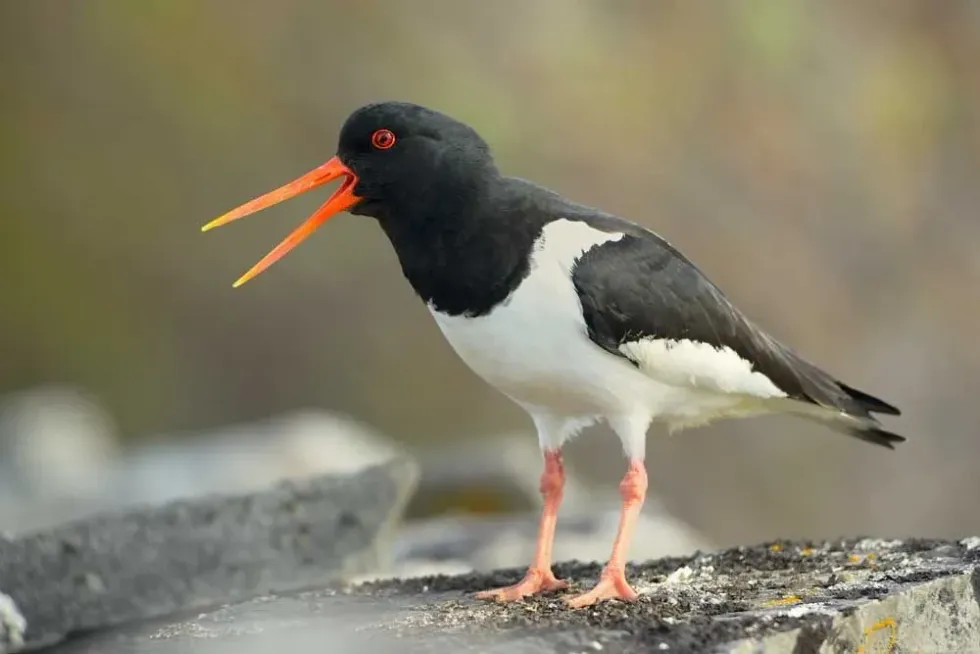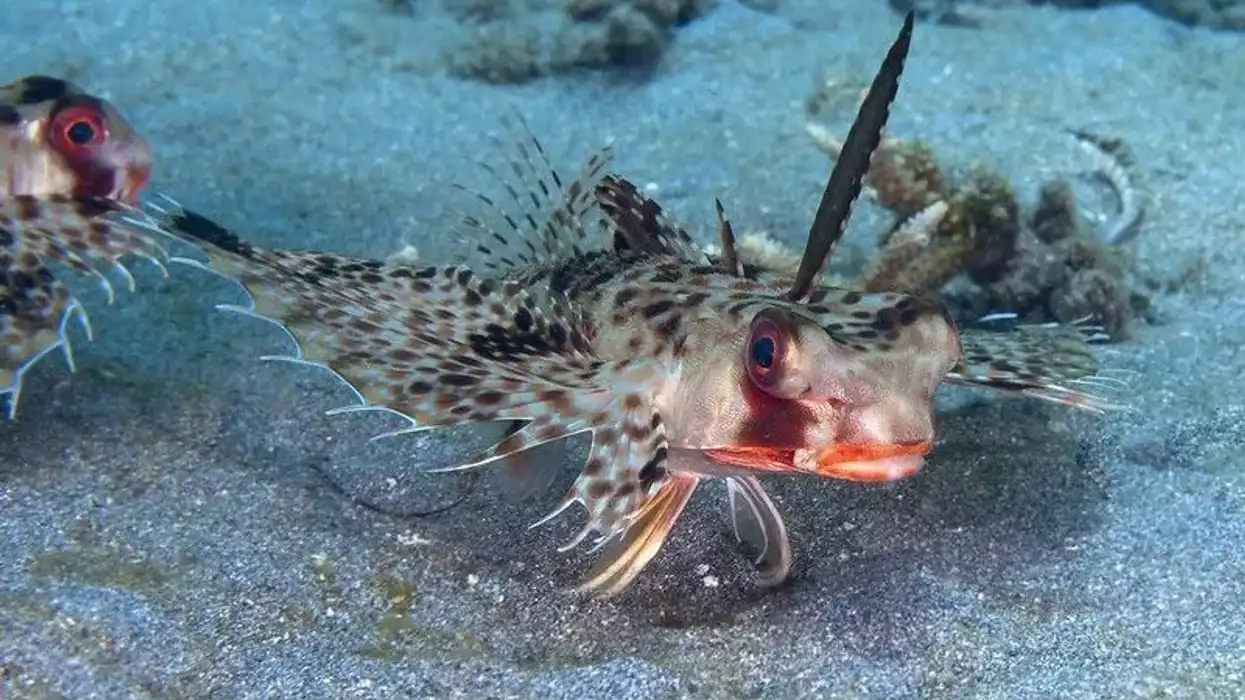If you want to find a bird who lives a long life, look no further than the Eurasian oystercatcher! This bird is found all over the world, such as in Africa, Asia, and more.
However, they are most popularly seen in Europe, earning them the name Eurasian (European and Asian.) It also has a very long life, frequently reaching up to 40 years old on average!
That is one of the highest numbers in the entire animal kingdom, and definitely something to be proud of for the Eurasian oystercatcher. Their primary diet, as the name also indicates, is oysters.
They are found living close to saline water where oysters are also found. Their long breaks, which are also very sharp, are the perfect way for them to crack open hard shells and enjoy their feast!
Do you want o know more about the Kingdom, phylum, class, order, family, diet, and more about this unique bird? Then continue to read on! Want to check out more interesting birds and share them with your friends? Then you must absolutely take a look at turkey facts and chicken facts!
Eurasian oystercatchers Interesting Facts
What type of animal are Eurasian oystercatchers?
The Eurasian oystercatcher (Haematopus ostralegus) is a type of wader bird.
What class of animal does a Eurasian oystercatcher belong to?
The Eurasian oystercatcher (Haematopus ostralegus) belongs to the class of birds.
How many Eurasian oystercatchers are there in the world?
These oystercatchers species are divided into four subspecies. However, the expected population of this Western European species is unknown.
Where do Eurasian oystercatchers live?
Oystercatcher birds belong to the family Haematopodidae, live in the wetlands. Western Europe, China, Central Eurasia, and the western coast of Korea are all breeding ranges for the Eurasian oystercatcher.
This species migrates southwards throughout the winter, through North Africa to the coastlines of southern Europe. In the winter, inland breeders migrate to the seaside. However, the species is prevalent year-round in Ireland and the United Kingdom.
What is a Eurasian oystercatcher’s habitat?
The Eurasian oystercatcher prefers saline meadows and beaches to rocky shores for breeding. However, it may also lay its eggs inland, in agricultural regions, or near bodies of water. Oystercatchers with pied feathers can be found in mangroves in estuaries, salty marshes, including rocky and sandy coasts during the non-breeding season.
Who do Eurasian oystercatchers live with?
During the winter, breeding performs in solitary couples or small groups. Larger flocks often develop in important estuaries and bays and at roosting places, foraging alone or in small numbers of up to 10 birds.
How long do Eurasian oystercatchers live?
The longevity of Eurasian oystercatcher birds is between 36-40 years in a suitable environment.
How do they reproduce?
Whether lined or not, its nest is a scrape, mostly on the ground. Oystercatcher males species are more likely to scrape, but females are more likely to select the site.
When the nest is created in a seaside area, shells and fragments of rocks are used if it is lined. The female oystercatcher species incubates the eggs for 24-35 days while the male defends the nest site.
What is their conservation status?
The IUCN declared their conservation status as of Least Concern. However, the status of mountain plovers is Near Threatened.
Eurasian oystercatchers Fun Facts
What do Eurasian oystercatchers look like?

The upper back, upper wing coverts, scapulars, neck, head, and upper breast of an adult male in breeding attire are all black. A wide white wing bar may be seen on the wings, which becomes slimmer and less regular as it approaches the tip.
A black terminal stripe can be seen on the tail. The long bill on their head is orange-red with a yellow-orange tip.
The winter plumage of an adult male is essentially the same. However, the vivid red color of their eyes and bill fades, and the legs become paler. Females oystercatchers are slightly larger and have a thinner, longer bill shape. Juveniles have a duller bill, legs, and eyes than adults.
How cute are they?
With vividly pied plumage, a broad, brilliant orange-red bill, and thick pinkish legs, the oystercatcher bird stands out and seems elegant as well as cute.
How do they communicate?
The Eurasian oystercatcher call is a piping whistle sound like 'kleep' or 'peep.'
How big are Eurasian oystercatchers?
The average length range of these Eurasian oystercatchers species is between 16–18 in (40.6–45.7 cm). The length range of the American oystercatcher measures around 15.7-17.3 in (39.8-43.9 cm). These Eurasian birds are similar in size to the American species.
How fast can Eurasian oystercatchers run?
Running speed is not very fast; however, the flight of these Eurasian oystercatchers is swift, powerful, and direct. With stiff, sluggish, and profound wing beats, the flight display appears butterfly-like and is a departure from their regular flights.
How much do Eurasian oystercatchers weigh?
For the breeding birds of Western Europe, the weight range is between 15-29 oz (425.2-822.1 g).
What are the male and female names of the species?
Male and female species of Eurasian oystercatcher don't have any significant name.
What would you call a baby Eurasian oystercatcher?
There is not any special title for baby species.
What do they eat?
Bivalves make up the majority of the diet of the oystercatcher birds. Other primary diets include limpets, mussels, earthworms, whelks, crabs, and insect larvae. Stabbing their bill tips between pores of a mussel's shells is how stabbers work.
Are they aggressive?
This oystercatcher, of the family Haematopodidae, is a fairly loud bird, as seen by its behavior, which ranges between contact calls and calls that follow various displays. It's frequently repeated throughout the breeding season, and is employed in hostile behavior among neighbors and territorial defense.
Would they make a good pet?
No! One should not consider keeping this wild bird as a pet because it is prohibited to keep them in your house and need a specific environment to survive.
Did you know...
The Faroe Islands' national bird is this oystercatcher species.
H.o. ostralegus, H.o. osculans, H.o. longipes, and H.o. finschi are the four subspecies of oystercatchers. They differ mostly in bill size, range, and the amount of the white wing band, as well as the amount of black upon its upper parts.
Mark Catesby adopted the title oystercatcher in 1731 as a popular name for the North American bird, H. palliatus, known for eating oysters. In 1843, Yarrell introduced this as the favored term, eliminating the previous name of sea pie.
At high tide, vast groups of oystercatchers species, having pied plumage, sleep mostly on the ground. This renders them exposed to predators on the ground, like foxes, as well as flying carnivores like birds of prey.
The American golden plover is one of the quickest fliers among seabirds.
Are oystercatchers endangered?
England's breeding population has grown to roughly 110,000 pairs globally, but Scotland has seen a large fall for unknown reasons. As a result, oystercatchers are categorized as Endangered in the UK and Vulnerable throughout Europe due to these local reductions.
Do oystercatchers come inland?
Initially a coastal bird, the oystercatcher has expanded inland to reproduce on streams and lakes over the last fifty years. However, most UK birds continue to spend the winters near the sea and are accompanied by birds from Iceland and Norway.
Here at Kidadl, we have carefully created lots of interesting family-friendly animal facts for everyone to discover! For more relatable content, check out these ani bird facts and vulture facts for kids.
You can even occupy yourself at home by coloring in one of our free printable Eurasian woodcock coloring pages.










